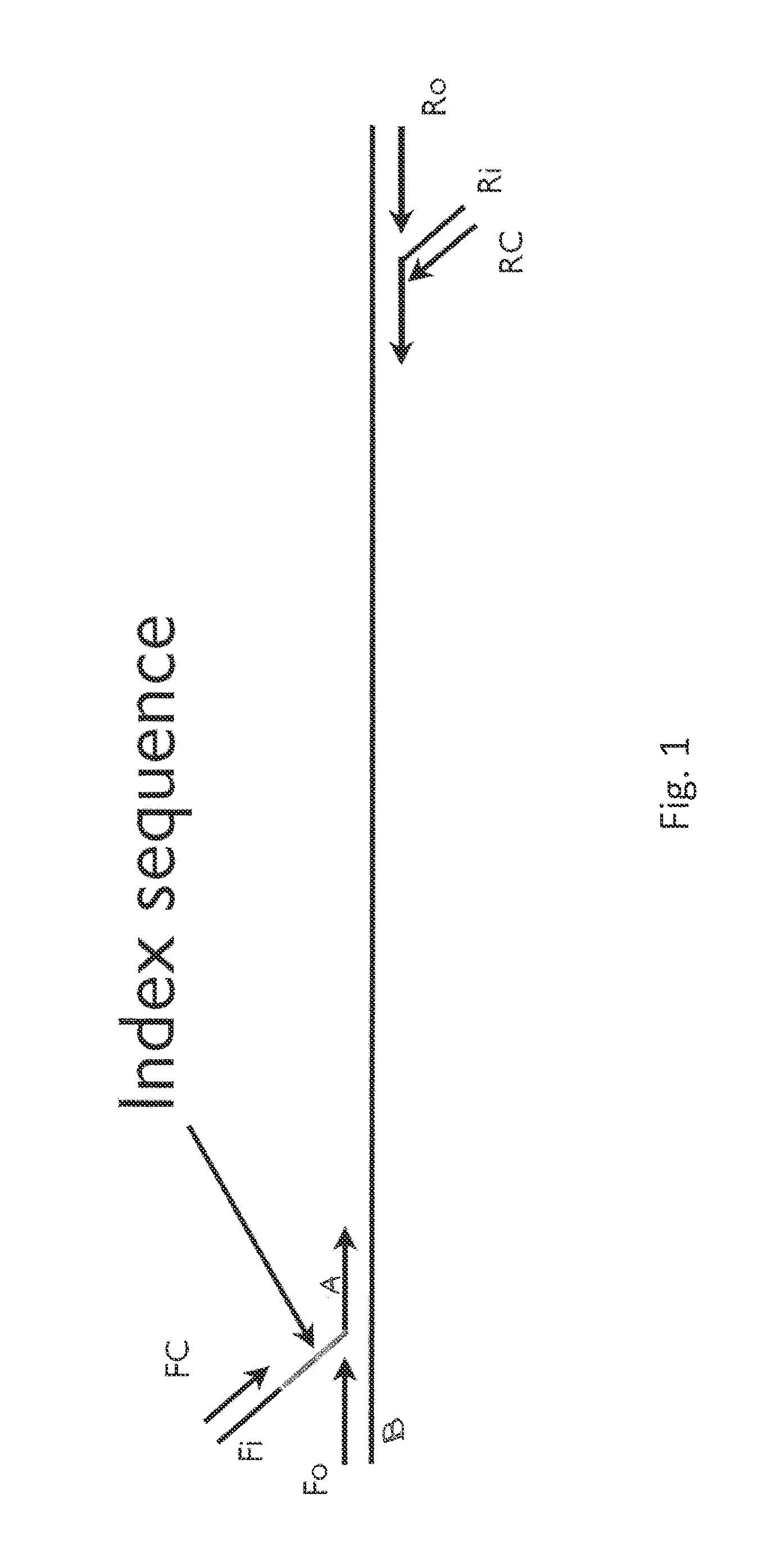Multiplex pyrosequencing using non-interfering noise cancelling polynucleotide identification tags
- Summary
- Abstract
- Description
- Claims
- Application Information
AI Technical Summary
Benefits of technology
Problems solved by technology
Method used
Image
Examples
Embodiment Construction
[0014]Pyrosequencing is a nucleic acid sequencing technique that is based upon the detection of released pyrophosphate during nucleic acid synthesis. Visible light is generated during this enzymatic reaction that is proportional to the number if incorporated nucleotides. Inorganic pyrophosphate is released as a result of nucleotide incorporation by the enzyme polymerase. In some embodiments, luciferase is utilized to generate light which is easily detected by a photodiode, photomultiplier tube, or a charge coupled device (CCD) camera. The sequence of the template nucleic acid may be determined because the added nucleotide is known. Pyrosequencing is possible with both DNA and RNA. Essentially, the method allows sequencing of a single strand of nucleic acid by synthesizing its complementary strand, one base pair at a time, and detecting which base was added at each step by measuring the light emitted during nucleotide incorporation. Pyrosequencing represents a rapid, accurate method ...
PUM
 Login to View More
Login to View More Abstract
Description
Claims
Application Information
 Login to View More
Login to View More - R&D
- Intellectual Property
- Life Sciences
- Materials
- Tech Scout
- Unparalleled Data Quality
- Higher Quality Content
- 60% Fewer Hallucinations
Browse by: Latest US Patents, China's latest patents, Technical Efficacy Thesaurus, Application Domain, Technology Topic, Popular Technical Reports.
© 2025 PatSnap. All rights reserved.Legal|Privacy policy|Modern Slavery Act Transparency Statement|Sitemap|About US| Contact US: help@patsnap.com

